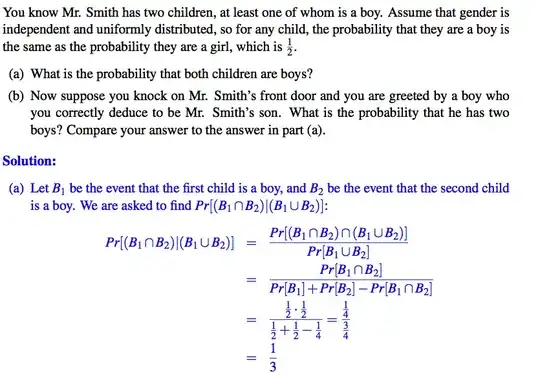I'm having trouble understanding the answer to the following question.
The part I'm particularly stuck on is the jump from step one and two where these two formulas appear to be equated
$Pr[(B_1 \cap B_2) \cap (B_1 \cup B_2)] = Pr[B_1 \cap B_2]$
I can't think of any properties of $\cap$ and $\cup$ that can allow us to do this. I tried drawing a Venn-diagram but was unable to represent $\cup$. Any clarification would be much appreciated!
EDIT:
I saw another solution to this question that simply does this.
Sample space:
BB BG GB GG
Since we already know one child is a boy, we can restrict our sample space to the first 3 entries. Out of those first 3 entries, only 1 entry is BB. The reason I was confused about this solution was that I didn't know the order of the boy and girl mattered. I would have made the "mistake" of making the sample space BB, GG, BG because BG is the same as GB. Please tell me why I'm wrong
